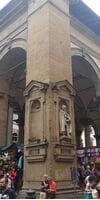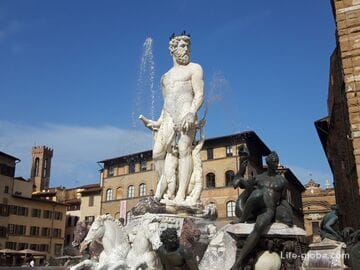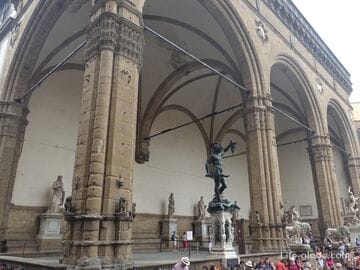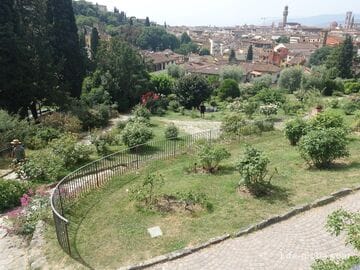Porcellino is a complex in Florence, which includes the Loggia Porcellino (Loggia del Porcellino), the current market with a stone of shame, and the famous fountain in the form of a boar (Fontana del Porcellino), which needs to rub a piglet for good luck.
This interesting and famous duo is located in the historical center of Florence.
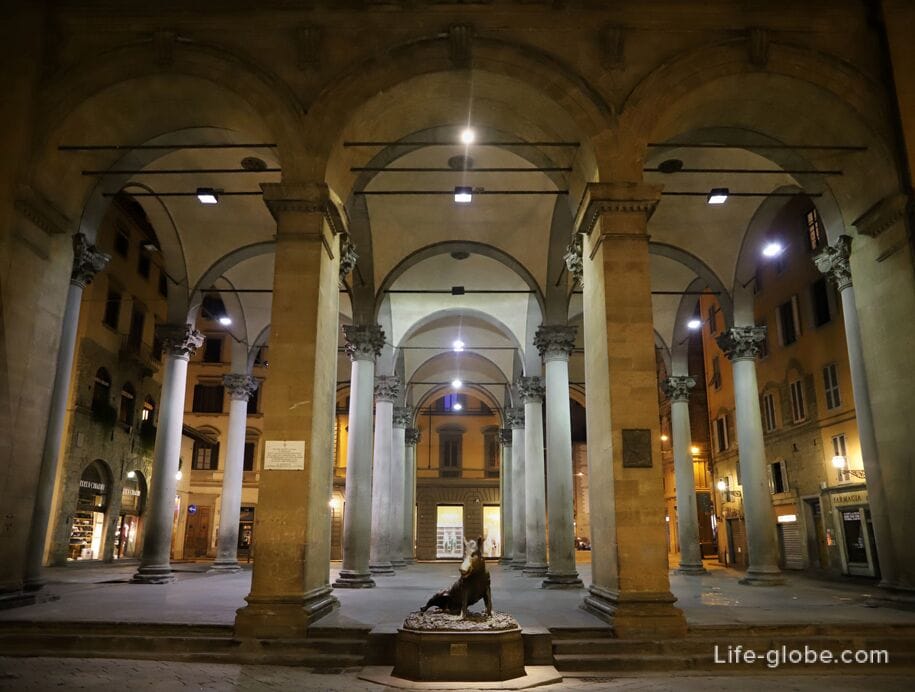
Porcellino Fountain
The Porcellino Fountain (Fontana del Porcellino, which translates as "piglet") is a bronze fountain with a sculpture of a boar, which is one of the most popular monuments in Florence.
The fountain is also called a boar sculpture or affectionately Florentine boar.
The boar figure was created and cast by Italian Baroque sculptor Pietro Tacca shortly before 1634 and was a copy of the Hellenistic marble original donated by Pope Pius IV Cosimo I de' Medici in 1560, during his visit to Rome. The original is now in the Uffizi Gallery in Florence.
Ferdinando II de' Medici decided to turn the work into a fountain, which was placed at the Loggia Mercato Nuovo since 1640. Probably on this occasion, Takka also created an octagonal base, and a bronze bowl for collecting water, decorated with bronze dense vegetation and insects, which hints at the natural environment of the swamp, which was absent in the marble original.
The fountain had mainly a practical function, as well as a decorative one, because it supplied water to merchants in the market, who at that time specialized in buying expensive fabrics such as silk, brocade and woolen fabrics.
Over time, the fountain deteriorated, and its base was replaced twice. The current boar statue is a replica cast in 1998 at the Ferdinando Marinelli Art foundry and replaced in 2008. The removed bronze statue is kept in the Museo Stefano Bardini in Florence.
The figure of a boar depicts a boar wounded during hunting.
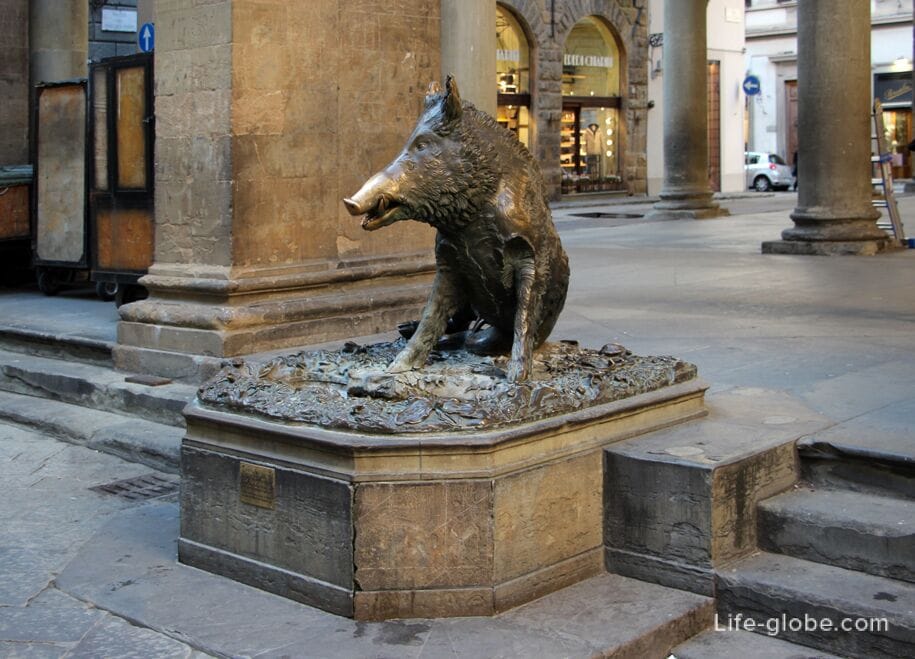
Folk tradition says that for good luck you need to rub a piglet to a boar, and it is better to perform a full ritual "rub a piglet - put a coin". The procedure for kindling luck is to put a coin in the Pig's mouth after you have rubbed his nose (piglet), and if the coin falls into the grate where the fountain water flows, then luck will certainly visit you.
In fact, the slope is such that only the heaviest coins easily fall into the cracks of the lattice; therefore, choose the largest of the coins for fun-ritual.
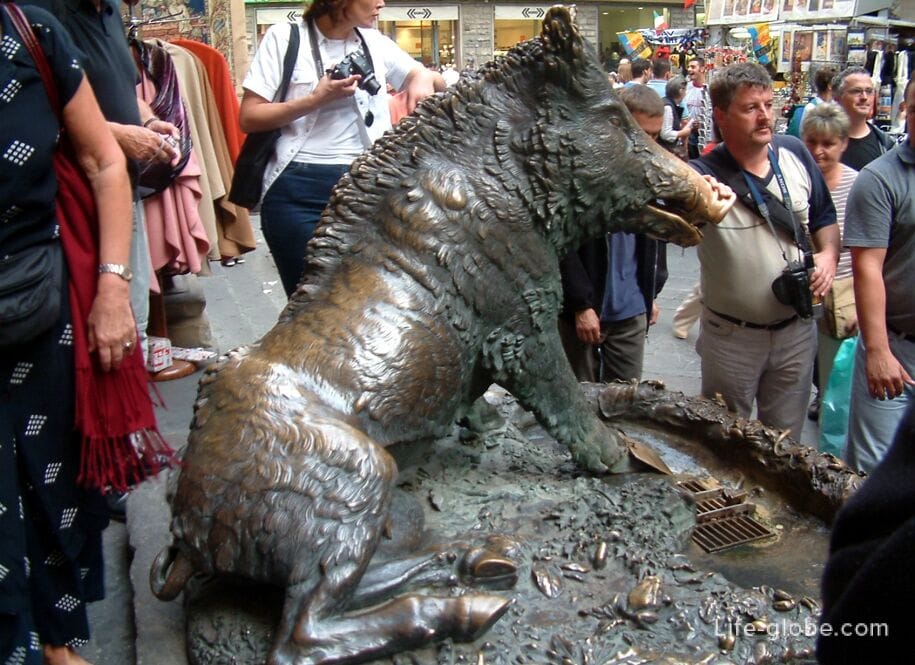
The grid where the coins fall
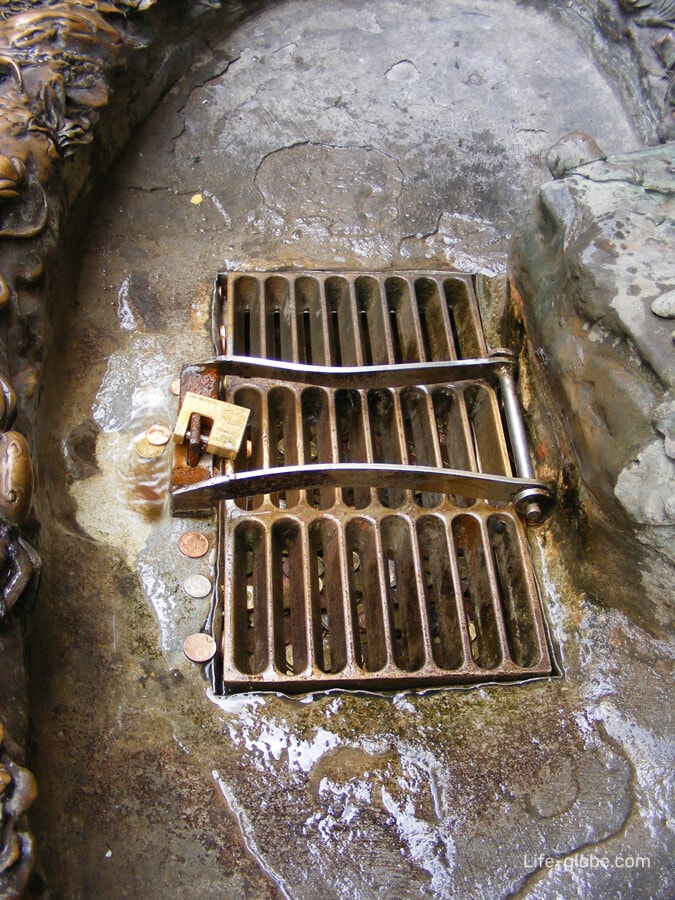
They say that all proceeds from collecting coins from the fountain are transferred to the charitable Catholic church institution "Opera della Divina Providenza Madonnina del Grappa".
There are many copies of the Florentine boar fountain in the world. For example, in Belgium, in Aix-en-Provence France, Munich, New York, etc.
Loggia-Porcellino Market
Loggia del Porcellino (Loggia del Porcellino) is a popular name for the loggia at the Nuovo market in Florence, named to distinguish it from the loggia at the Vecchio market, located in the area where the Republic Square (Piazza della Repubblica, Piazza della Repubblica) is located today.
The loggia was built between 1547 and 1551 by Giovan Battista del Tasso in the heart of Florence, a few steps from the Ponte Vecchio Bridge. Initially, the loggia was intended for the sale of silk and jewelry, and since the nineteenth century, the famous Florentine knitted hats. Today, mainly leather goods, clothing and souvenirs are sold here.
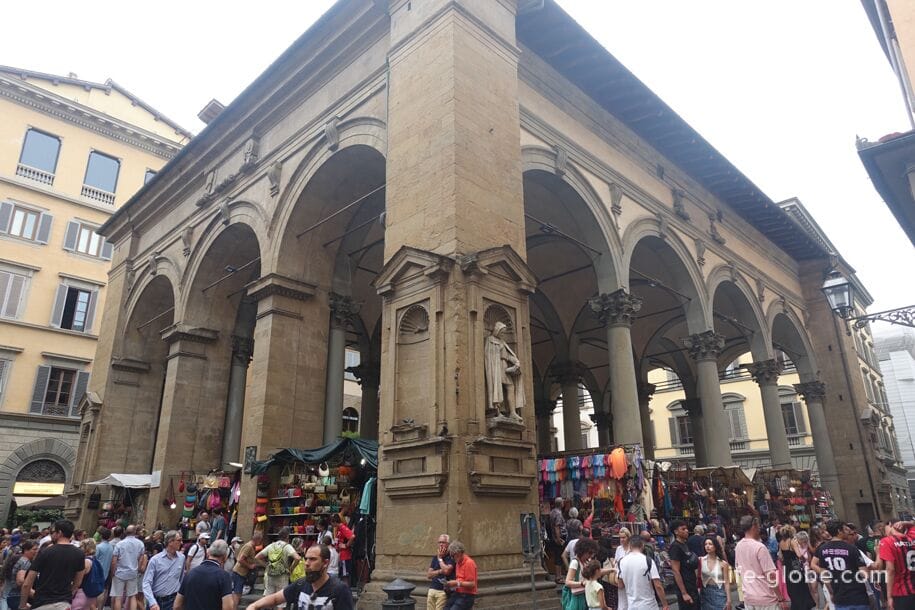
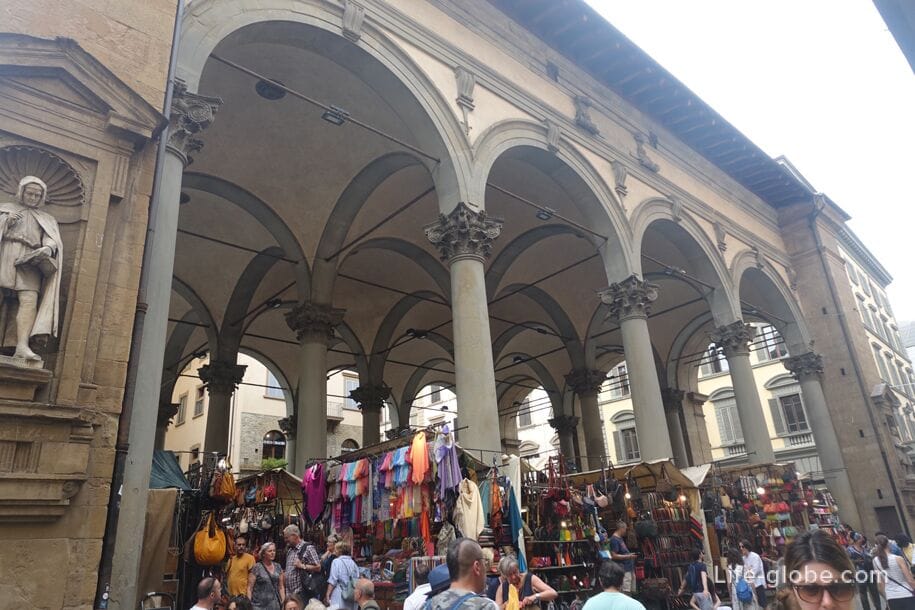
Statues of famous Florentines were supposed to be placed in the corner niches of the loggia, but at the end of the 19th century only three of them were executed: the Italian politician and the protagonist of the history of medieval Florence Michele di Lando by Ippazio Antonio Bortone; the Italian merchant, historian and chronicler Giovanni Villani by Gaetano Trentanova; the Italian jeweler and printer Bernardo Cennini by Emilio Mancini.
In the photo below, statues in niches, from left to right: Bernardo Cennini, Michele di Lando and Giovanni Villani
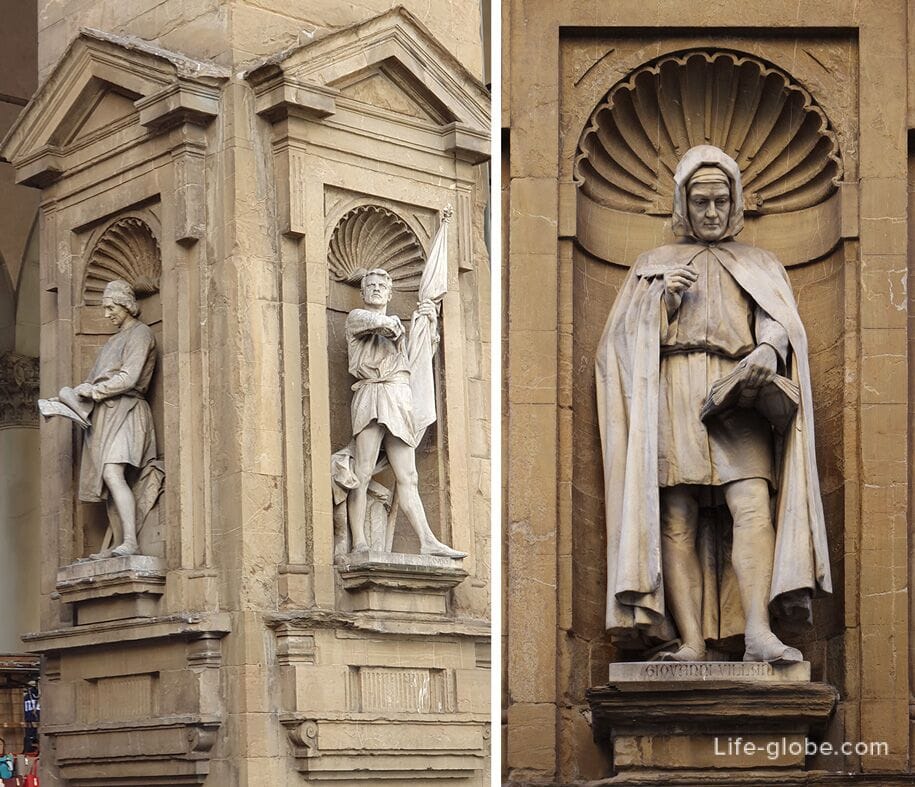
Interesting in the loggia is the so-called "stone of shame" (Pietra dello scandalo or "acculata") - a two-tone marble tondo placed in the center of the loggia.
The current stone is a reconstruction of 1838 and reproduces in life size one of the wheels of the medieval Carroccio (a large four-wheeled wagon with city signs around which the militia of medieval communes gathered and fought), the symbol of the Florentine Republic, on which the city standard was raised. At the point marked today by the stone, Carroccio stood, and the Florentine troops gathered around him before the battles.
The stone had another function, from which this place received the name "stone of shame" or "stone of punishment of a loafer". So, in the Renaissance, the punishment of insolvent debtors was that they were chained to a post at this place, then their pants were pulled down and the unwanted were slapped on the buttocks.
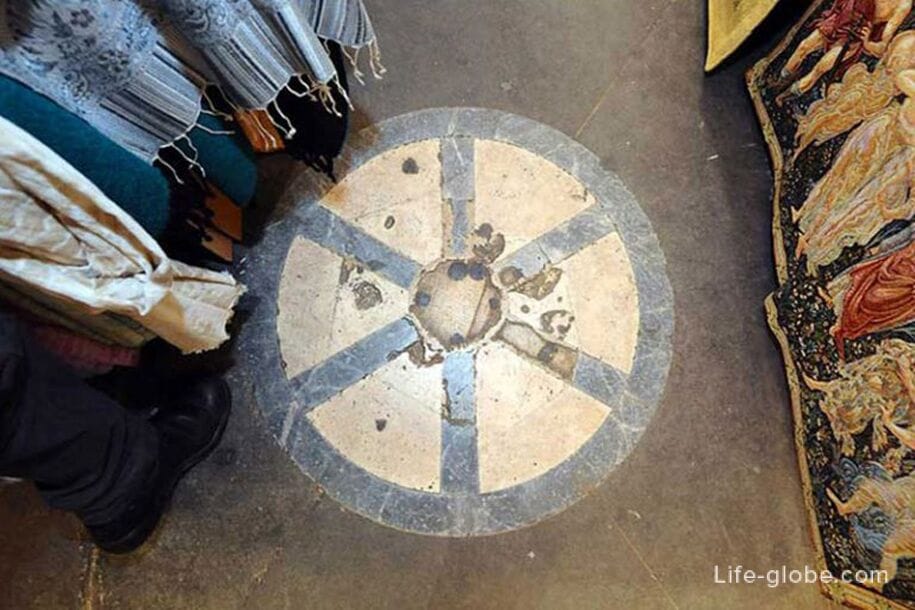
Website of the Porcellino market in Florence: mercatodelporcellino.it.
All accommodation facilities in Florence (hotels, apartments, guest houses, etc.), including in the historical center of the city and more remotely from it, can be viewed and booked here




